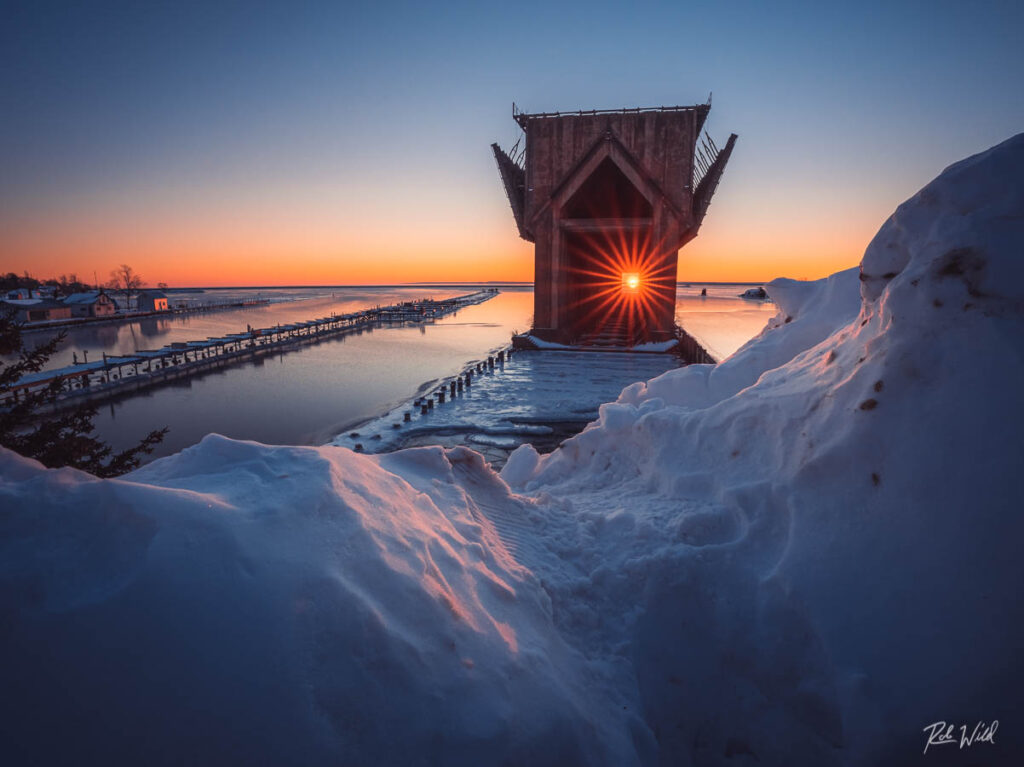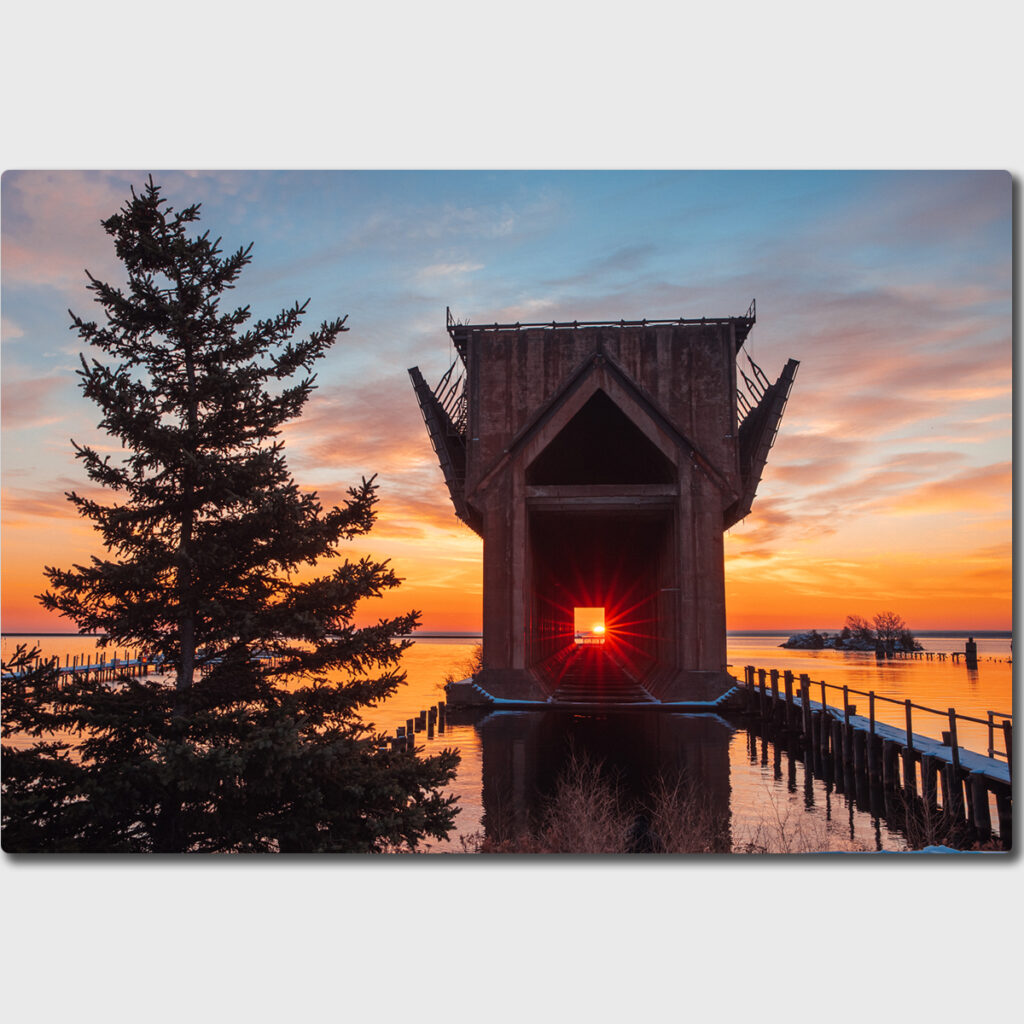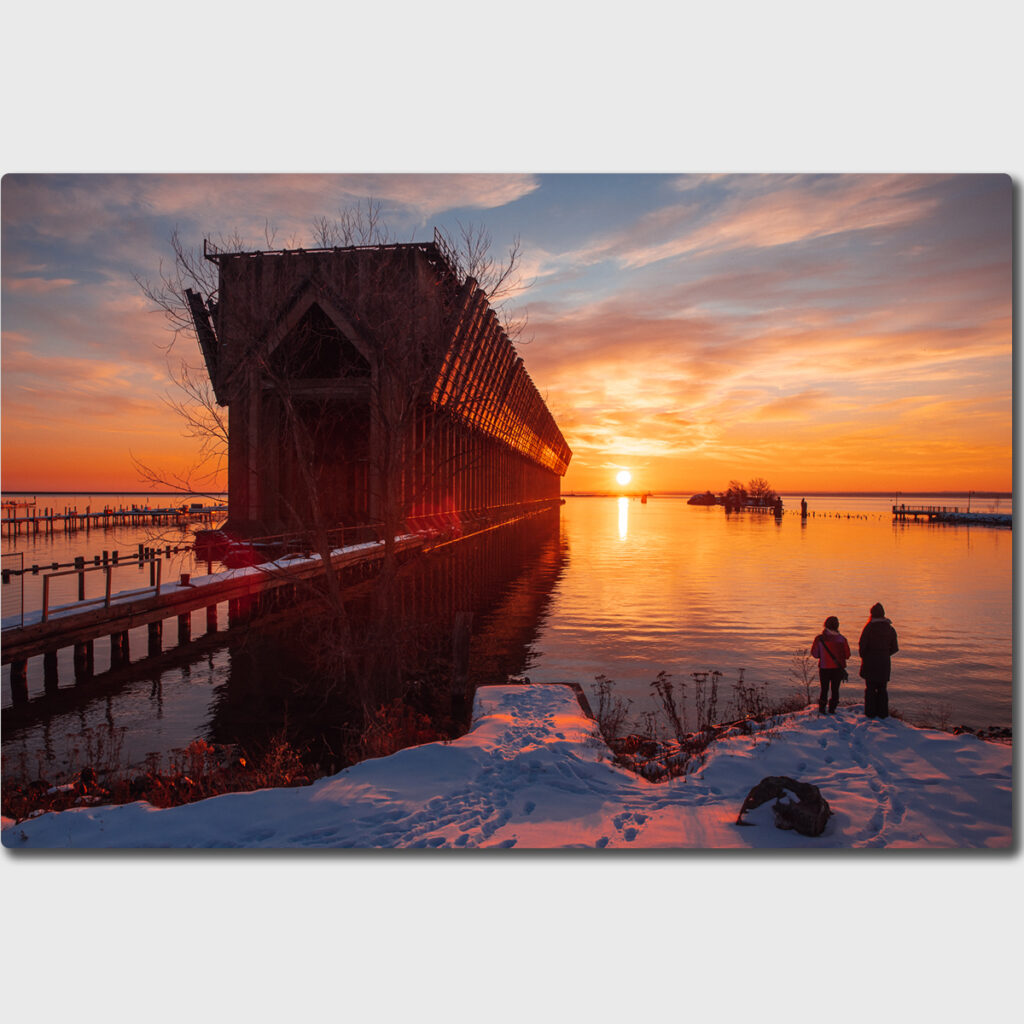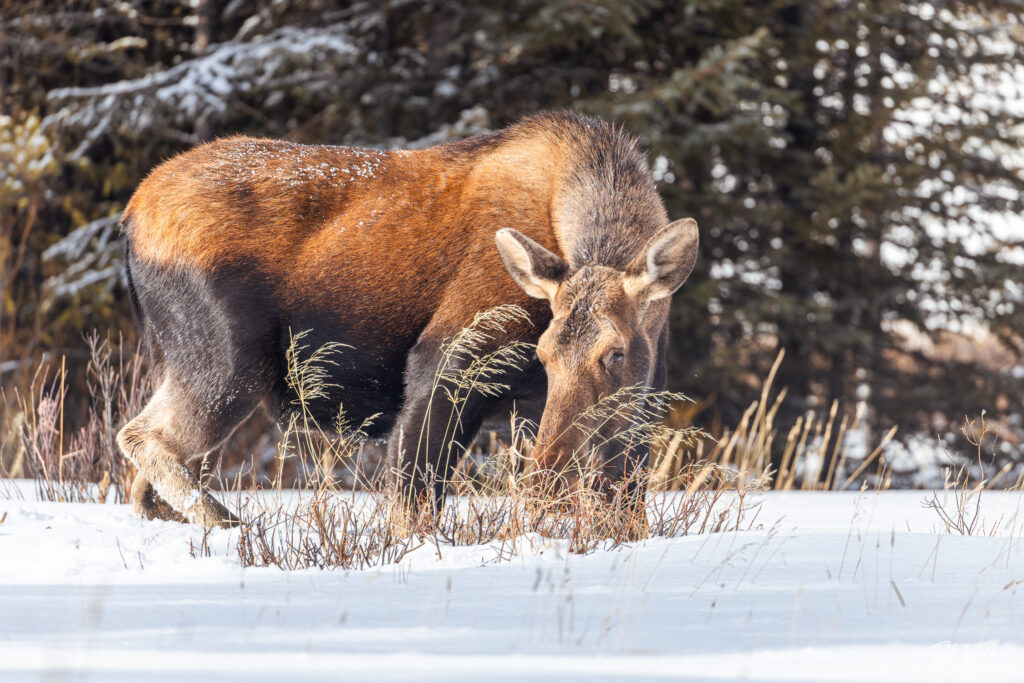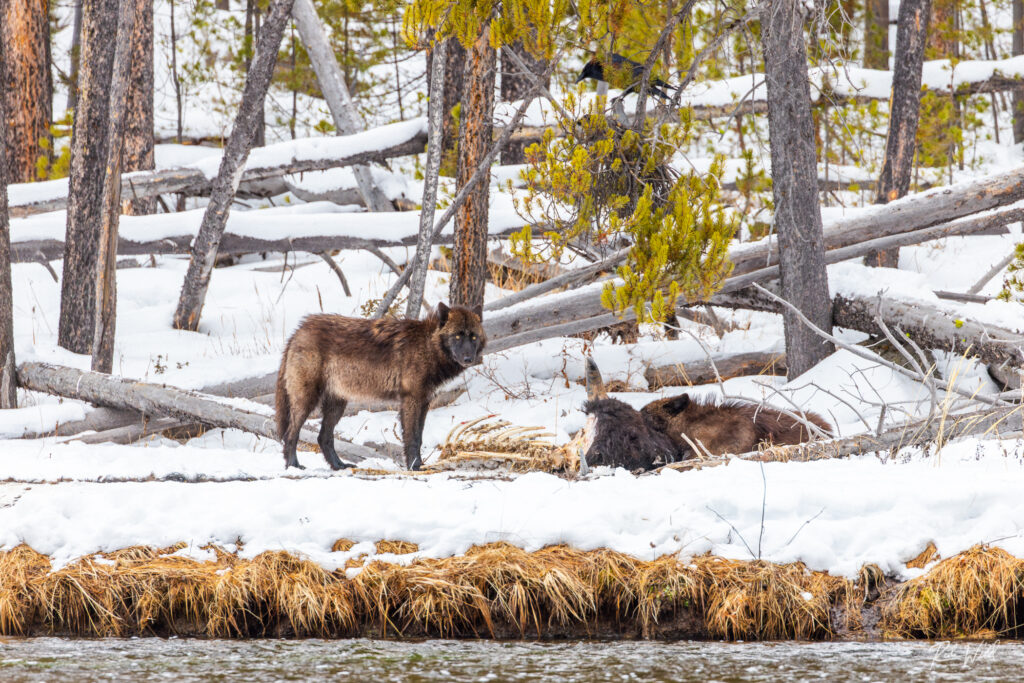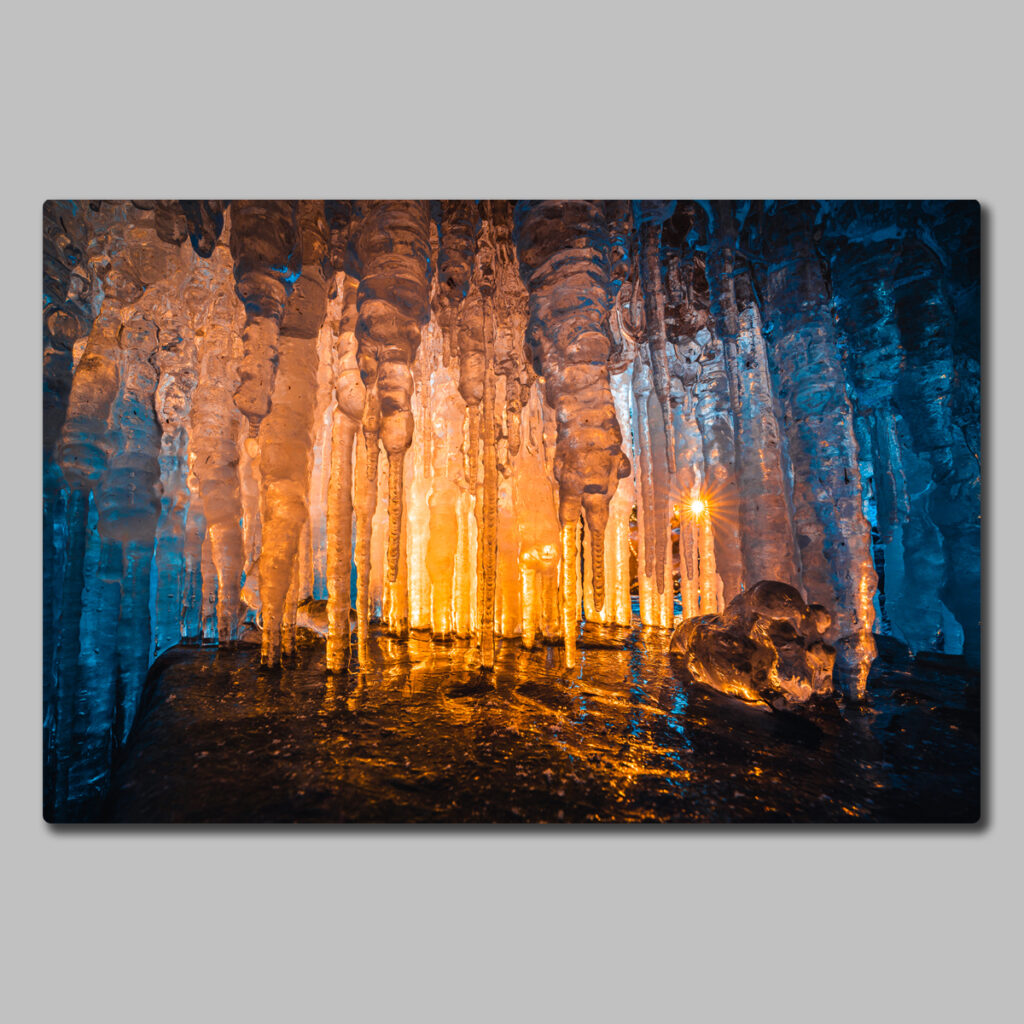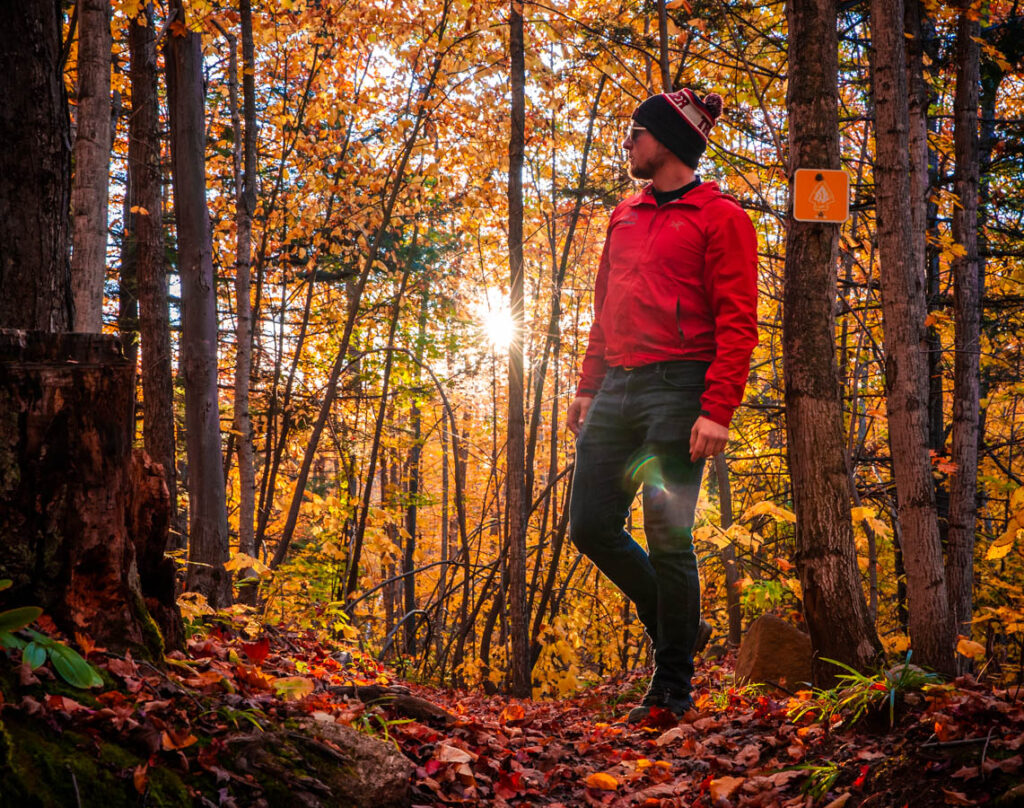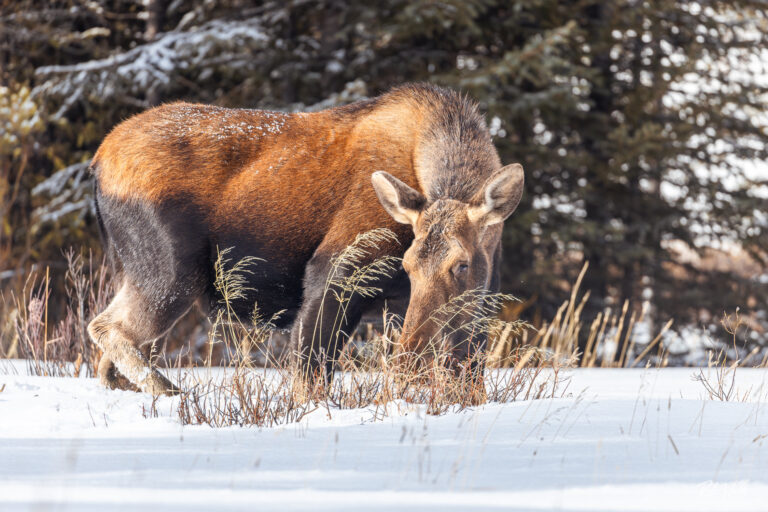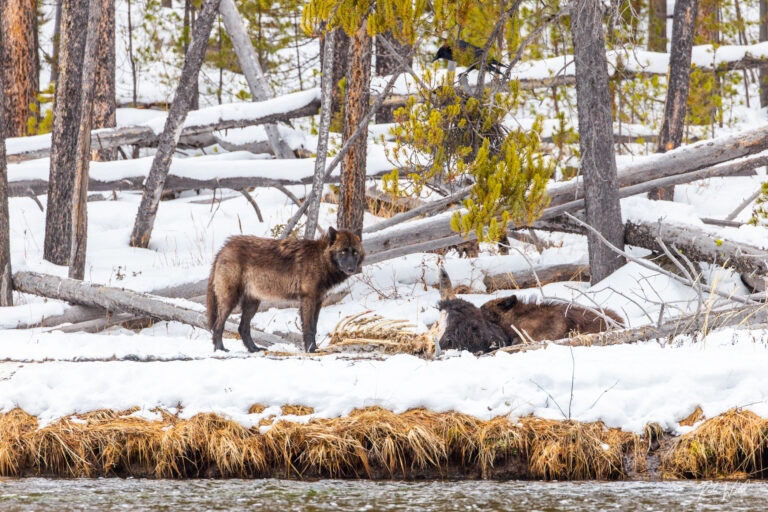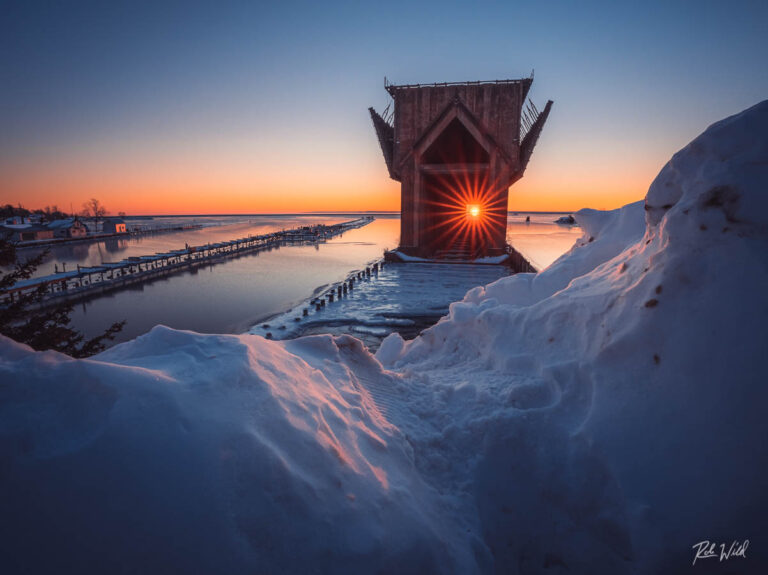Twice per year, a small crowd bundles up in puffy jackets and gathers at Marquette’s Lower Harbor ore dock to witness a unique sunrise phenomenon: Orehenge. “Orehenge” is an unofficial nickname coined by locals, although the name (and the event) is quickly gaining popularity. But what exactly is Orehenge, and what’s the big deal?
The Marquette Ore Docks
Before we get into Orehenge, we have to back up a couple steps. Orehenge would not be possible without the imposing ore dock structure located in downtown Marquette’s Lower Harbor. These ore docks are scattered all around the shores of Lake Superior, and were used for loading iron ore onto freighter ships. The sides of the dock are lined with huge metal chutes. When a ship came in for loading, rail cars full of taconite pellets would dump their cargo into the chutes, which would pivot down to drop the ore onto the waiting ships.
There are still several operational ore docks on Lake Superior (including the active dock near Presque Isle). But the Lower Harbor dock has been decommissioned since 1971. It currently stands as an abandoned relic of Marquette’s mining history, although there are plans in motion to eventually revitalize the dock into a more accessible public space.
As far as Orehenge is concerned, the most important feature of the ore dock is the large opening in the middle of the structure. Since this opening faces due East, it provides the perfect frame for a rising sun as long as you catch it at the right time of year.
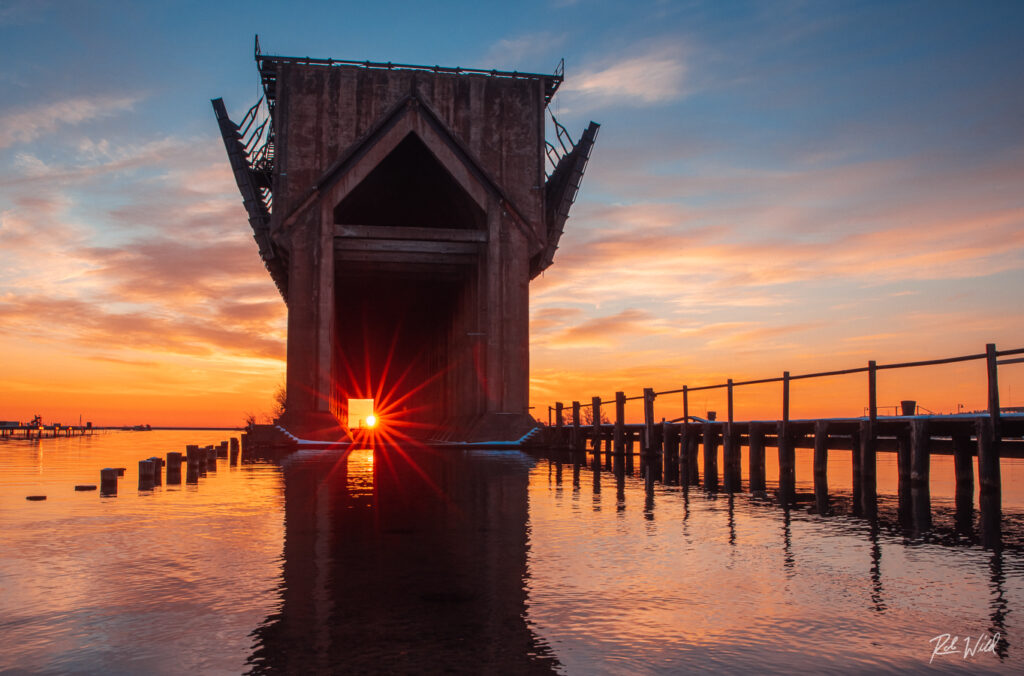
What is orehenge?
Alright, that’s all well and good, but what is Orehenge? Don’t worry, you’re not behind the 8-ball on some viral new TikTok dance trend. Orehenge is much more spectacular than that (and much less damaging to your dignity). Simply put, it is a brief few-day stretch when the sun is at the perfect latitude to rise through the opening in Marquette’s ore dock. This makes it look almost like the ore dock has captured the sun inside!
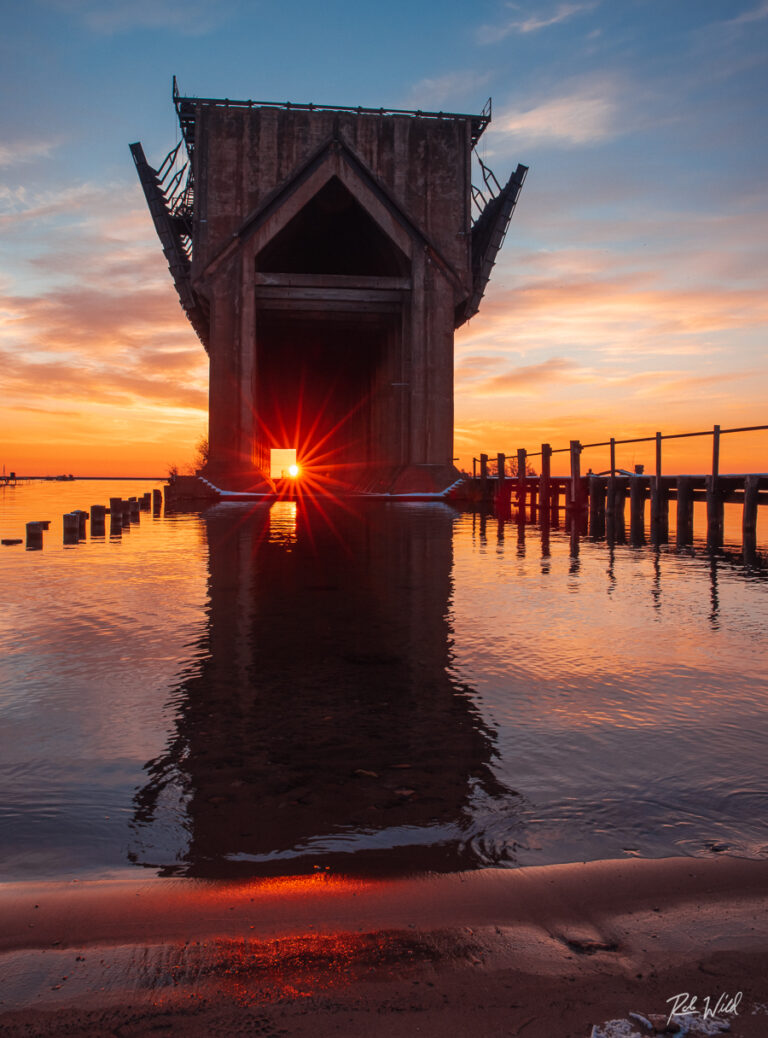
Orehenge has grown into quite the local event these days. Just a few years ago, it was not uncommon to photograph this event in the company of just a small handful of other dedicated photographers. I have even experienced a few occasions where I was the only one there. But these days, it is normal to see a couple dozen Yoopers (and travelers) excitedly sharing the moment together as the sun comes up. While the crowds may not be for everyone, I have found that the experience is so much fun to share with others! The camaraderie and shared excitement in the air is awesome to be a part of.
how to view orehenge
Capturing an Orehenge sighting is not particularly difficult, it just takes a little planning and a healthy dose of patience. First of all, make sure you’re there at the right time of year. The sun is only at the perfect latitude for a few days around November 21 and January 21. In both cases, there is a window of 4 or 5 days when the sun is inside the opening in the ore dock.
In addition to time of year, you need to make sure you are there at the right time of day: sunrise. Fortunately, sunrises in November and January are usually around 8:00am. That means it’s doable even if you’re not normally much of a morning person. But it is important to get there a few minutes early to make sure you don’t miss it. The sun will only be inside the opening for a few minutes, tops. If clouds block the horizon to the east, it might poke through for only a few seconds. Too often, I have seen people show up a couple minutes past sunrise only to realize they have already missed it.
The only wild card in all of this is the weather. Especially in November, the Upper Peninsula is infamous for moody, overcast days. Some cloud cover can make for spectacular sunrises, of course. But if those clouds are on the eastern horizon, the sun will be blocked from view. This is where patience and persistence can pay off. You might have to try for multiple days in a row. But if the sun eventually breaks through, it’s all worth it. If you want to stack the odds in your favor, shoot for the January Orehenge. Clouds can still be an issue then too, but January generally has more clear days than November.
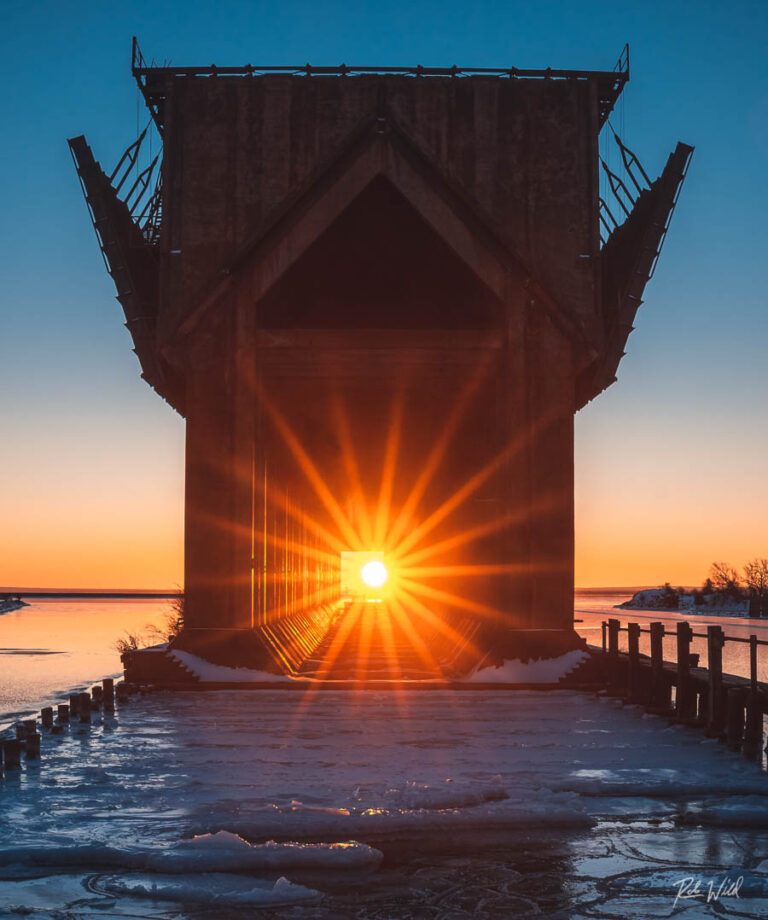
orehenge etiquette
With so many people interested in viewing Orehenge these days, the crowd can get quite large . And while there is plenty of space for everyone , it’s important to keep a few things in mind:
- Be respectful of others. It’s okay to politely ask people if there’s room to stand next to them. But don’t nudge people out of the way or stand directly in front of someone.
- Be aware of your surroundings. There are usually a lot of people trying to get a photo of this event. It doesn’t matter whether it’s someone taking a phone snapshot or a professional photo, try to keep an eye out behind you and avoid blocking people’s photos.
- On the flip side, photographers need to remember to share the space with others. Just because we have expensive cameras doesn’t mean we own the place. While it may be rude for someone to stand in our shot, it is equally rude for us to tell them they’re not allowed to be there. Everyone has a right to witness this natural spectacle, and it is our jobs as photographers to work around them. Even with large crowds, I have never had an issue getting multiple shots with no people in the frame, while also not blocking other people’s shots. If you simply set up a tripod and expect everyone else to stay out of the way, you’re asking to be disappointed. But there’s plenty of opportunity if you get creative and move around!
- Spread stoke and positive vibes, not negativity. Enjoy the experience. Don’t get so stressed out about getting a photo that you forget to simply enjoy being part of this community of excited sunrise-lovers!
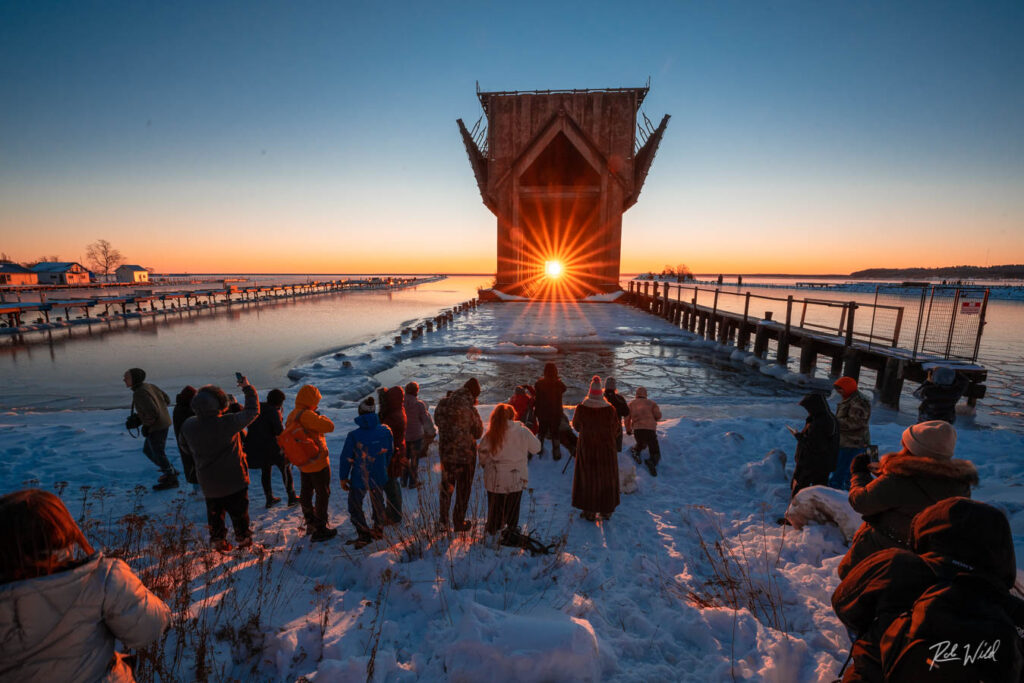
local orehenge art
An event like Orehenge naturally attracts a lot of photographers! There are many locals who have done an outstanding job capturing this spectacle. If you are interested in picking up a print of a beautiful Orehenge sunrise, here are some options:
- Shannon Kivi (906 Images)
- Bryan Mitchell Photography
- Waves are Words
- Of course, I also am stoked to have captured Orehenge many times. Check out some Orehenge prints from yours truly in my webstore!

